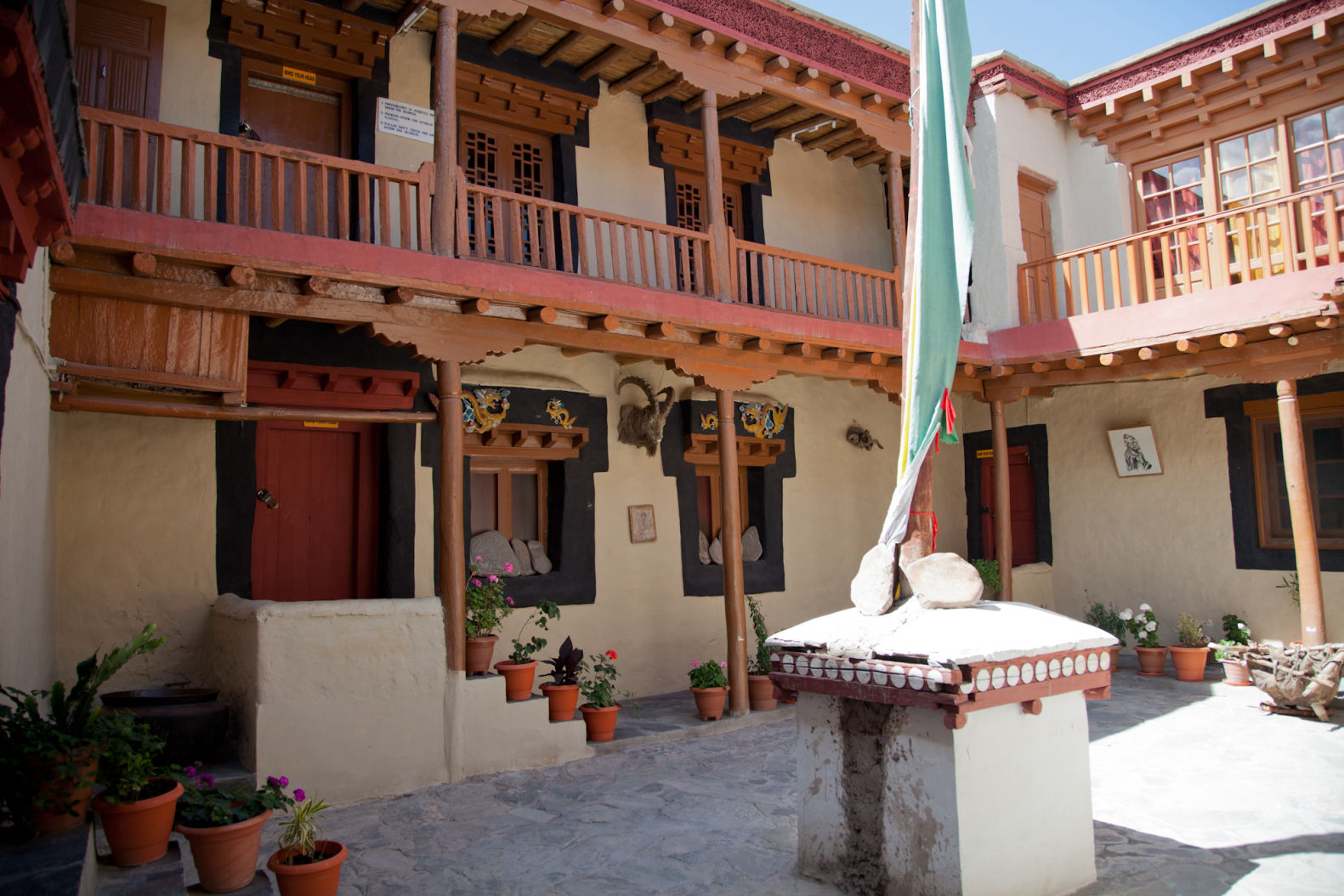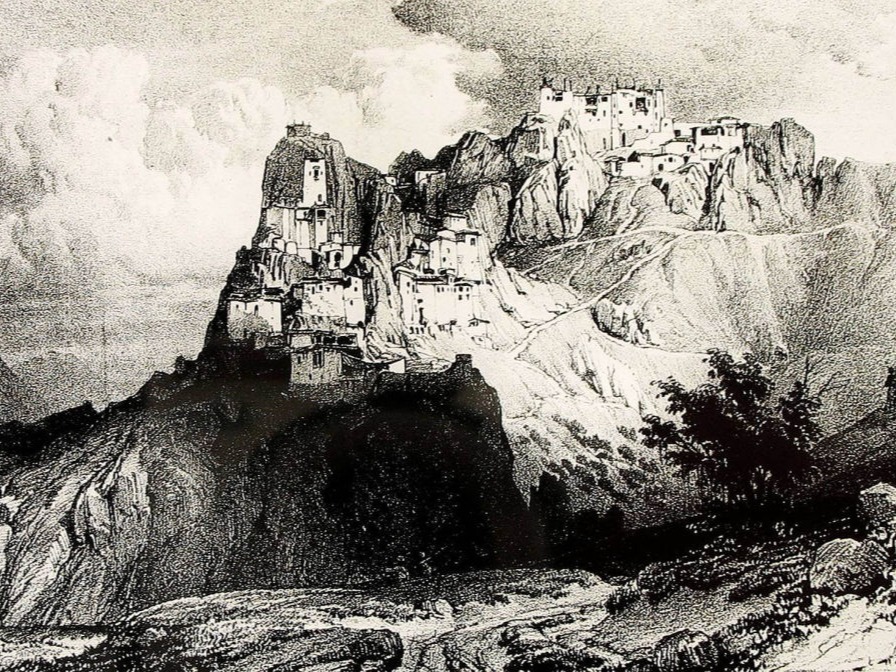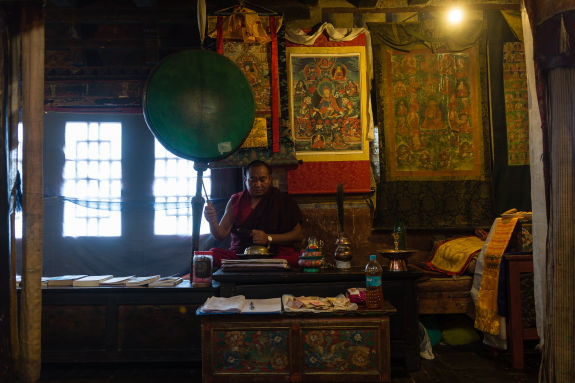
Withstanding modernity, tradition,
environment and time.
The Stok Palace still continues to be a snug abode for the Namgyal dynasty. The Namgyal dynasty traces its origin to its founder –Lhachen Palgygon as early as 10th century. You are entering a historical property and the Palace stands almost 200 years old. The Stok Palace was opened to public in 1980 with blessings of His Holiness the Dalai Lama. It encapsulates and reflects the lifestyle and history of royalty set in the midst of the valley of Singey Sangpo which is popularly known as the Indus River.



The Lhakchung - the Buddhist temple shrine on the upper-most floor of the palace. The resident monk here performs daily prayers and rituals as part of his duties. Guests are welcome to be quiet observers to enchanting routine. The morning and evening prayers have an enchanting effect on the audience.
The monk who is deputed here from Chemrey monastery for one year at a time makes sacred amulets. Each amulet usually contains a hand written prayer on a piece of cloth or paper which is then folded and either sewn into a piece of hand-woven tapestry or bound by different colored sacred threads that bind the paper in a pattern as per the amulet’s purpose. You may gift an amulet to a loved or respected one for a defined purpose such as a prayer for good health or well being; or a prayer for peace or compassion. Guests have the option of reserving time with the monk where he will take you through the process of creating an amulet to take back as a gift.


The Stok Palace Museum houses an intriguing collection of precious artefacts and relics related to Ladakh's old monarchy, which particularly attract historians and anthropologists. Ancient coins, royal seals, regal costumes, precious jewellery and photographs can be found well preserved in this museum. Also displayed here are the royal family’s collection of thangkas, some of which are over 400 years old. A separate room exhibits warfare equipment of Ladakh's kingdom, where visitors can see an impressive assortment of swords, shields, bows, arrows, quivers and guns.

STOK PALACE HERITAGE HOTEL LADAKH